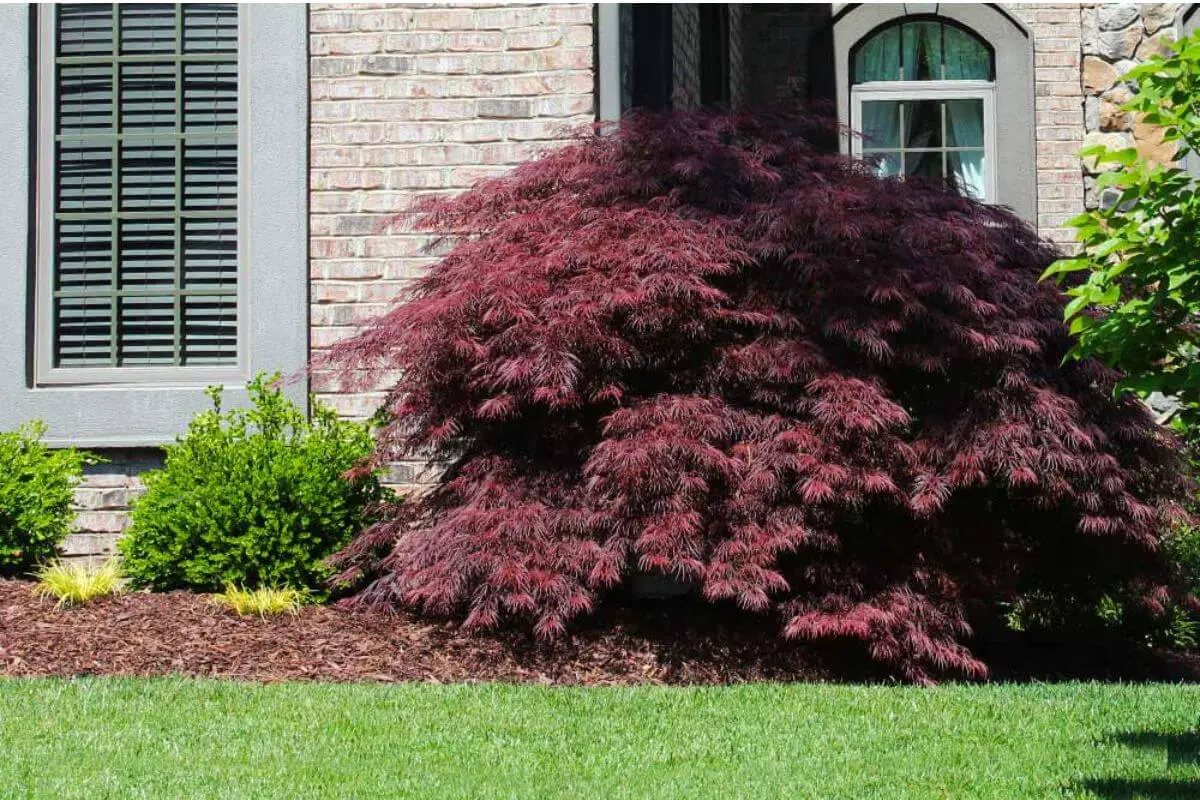If you’re an avid gardener or simply someone who appreciates the beauty of nature, you’ve probably encountered the delightful conundrum of selecting the right ornamental tree for your landscape. Among the top contenders in this botanical beauty contest are the Tamukeyama Japanese Maple and the Crimson Queen. Both trees boast exquisite foliage, unique growth habits, and a touch of elegance that can elevate any outdoor space. In this article, we’ll delve into the intriguing world of these two captivating trees and explore the nuances that set them apart. So, let’s dive in and uncover which one between the Tamukeyama Japanese Maple and Crimson Queen is the true horticultural champion.
1. Introduction to Ornamental Trees
Before we embark on our comparison, let’s take a moment to understand what exactly qualifies a tree as an ornamental wonder. Ornamental trees are cultivated primarily for their aesthetic appeal rather than practical purposes like fruit production or shade provision. These trees are prized for their unique foliage, distinctive shapes, and vibrant colors that can transform any landscape into a visual masterpiece.
2. The Allure of Tamukeyama Japanese Maple
The Tamukeyama Japanese Maple (Acer palmatum ‘Tamukeyama’) is a dazzling deciduous tree that originates from the Land of the Rising Sun. With its gracefully cascading branches and delicate, lace-like foliage, it’s no wonder that this tree has become a darling of landscapers and garden enthusiasts alike.
2.1 Foliage and Color Palette
One of the standout features of the Tamukeyama Japanese Maple is its foliage. The leaves are deeply dissected, resembling the intricate patterns of lace. During spring and summer, the foliage showcases vibrant shades of reddish-purple that add a burst of color to any garden. As fall approaches, the leaves transition to a breathtaking crimson hue, creating a stunning autumnal spectacle.
2.2 Growth Habit
The Tamukeyama Japanese Maple typically grows to a moderate height of 6 to 8 feet, making it an ideal choice for small gardens or even container planting. Its cascading branches create an elegant, weeping form that adds a touch of drama to the landscape. This tree is a true work of art, with its branches gracefully arching downward in a mesmerizing display.
3. The Charisma of Crimson Queen
Enter the Crimson Queen Japanese Maple (Acer palmatum ‘Crimson Queen’), a tree that exudes charm and sophistication in every aspect of its being. This cultivar is renowned for its compact size and captivating foliage.

3.1 Foliage and Form
The Crimson Queen Japanese Maple boasts deeply dissected, lace-like leaves that emerge in a rich burgundy hue. As the leaves mature, they maintain their striking color, creating a canopy of intense red that can instantly captivate the eye. The tree’s growth habit forms a dense mound, adding a sense of fullness and texture to the landscape.
3.2 Size and Versatility
Standing at a height of approximately 5 to 6 feet, the Crimson Queen Japanese Maple is the epitome of a compact ornamental tree. Its small size makes it a versatile option for various garden settings, from urban courtyards to traditional Japanese-inspired gardens. The tree’s lush foliage and compact nature make it an excellent choice for those seeking to infuse a touch of drama and elegance into limited spaces.
4. A Comparative Analysis
Now that we’ve explored the individual characteristics of the Tamukeyama Japanese Maple and the Crimson Queen, let’s put them side by side for a thorough comparison.
4.1 Size and Placement
Both trees are compact in size, making them suitable for small gardens or even container planting. However, if you’re looking for a slightly taller option, the Tamukeyama Japanese Maple might be the better choice.
4.2 Foliage and Color
While both trees boast stunning foliage, the Tamukeyama Japanese Maple’s transitioning colors from reddish-purple to crimson in the fall give it a slight edge in terms of color diversity.
4.3 Form and Texture
The Tamukeyama Japanese Maple’s weeping growth habit creates an elegant and artistic focal point. On the other hand, the Crimson Queen’s dense mound-like form offers a more structured and compact appearance.
5. Conclusion
In the world of ornamental trees, the choice between the Tamukeyama Japanese Maple and the Crimson Queen ultimately depends on your specific preferences and garden requirements. The Tamukeyama Japanese Maple brings a touch of drama with its cascading branches and vibrant foliage, while the Crimson Queen offers a compact yet intense burst of color and texture. Whichever you choose, these trees are bound to transform your outdoor space into a haven of beauty and elegance.
FAQs
1. Can I plant the Tamukeyama Japanese Maple in a container?
Absolutely! The moderate height and weeping form of the Tamukeyama Japanese Maple make it a perfect candidate for container planting.
2. Will the Crimson Queen’s red foliage fade over time?
No, the Crimson Queen’s foliage retains its rich red hue throughout the growing season.
3. Do these trees require special care?
Both trees prefer slightly acidic, well-draining soil and benefit from regular watering and mulching.
4. Can I plant these trees in full sun?
While they can tolerate some sun, both trees thrive in partial shade, which helps protect their delicate foliage.
5. Do these maples attract wildlife?
Yes, the vibrant foliage of these maples can attract birds and insects, adding life and movement to your garden.



